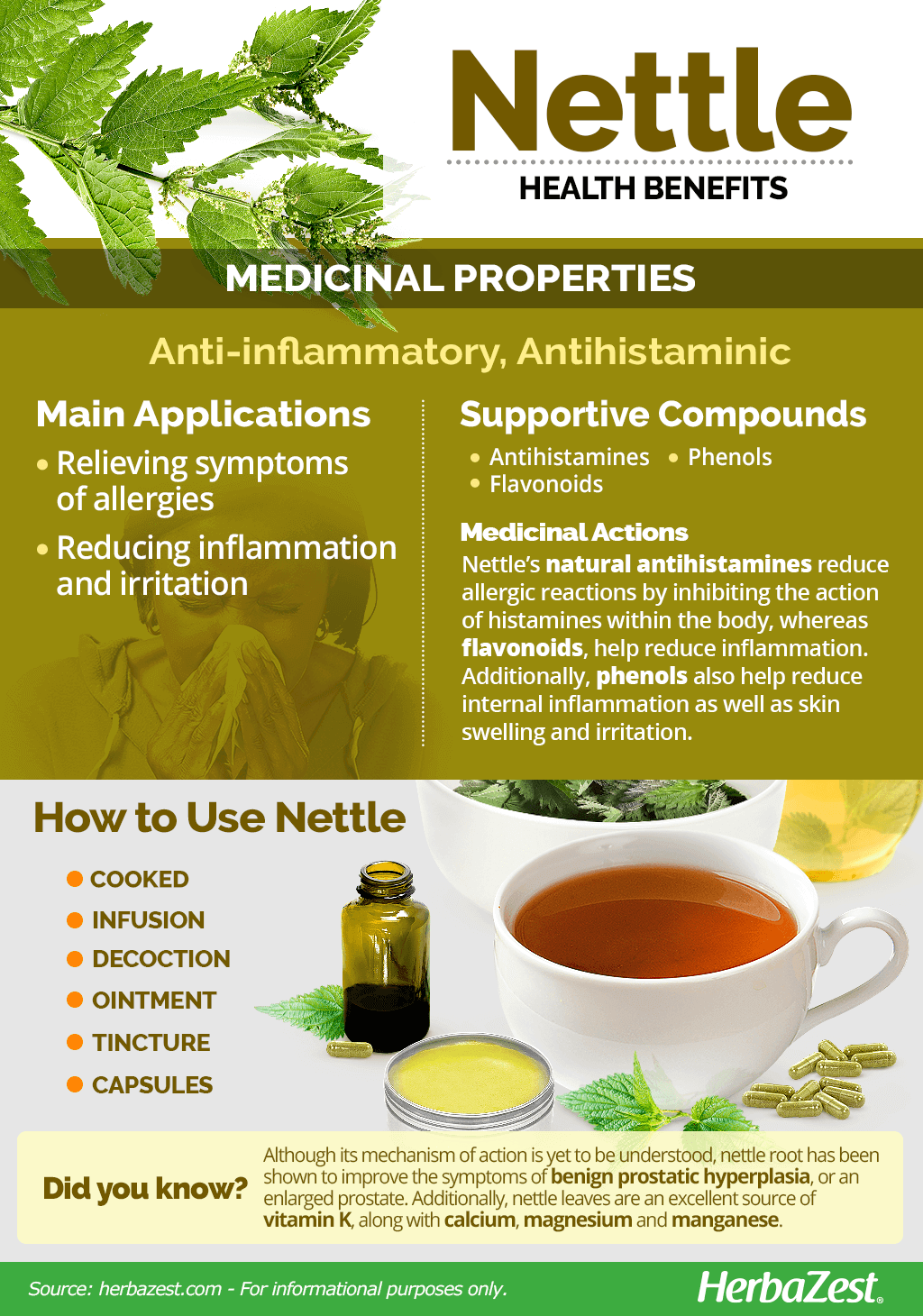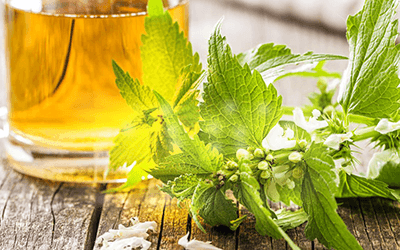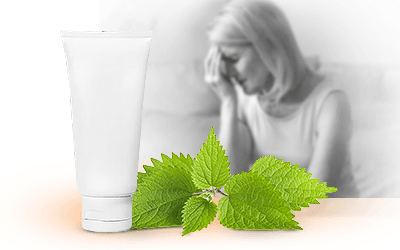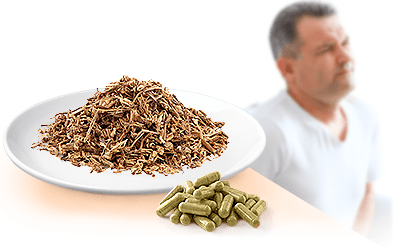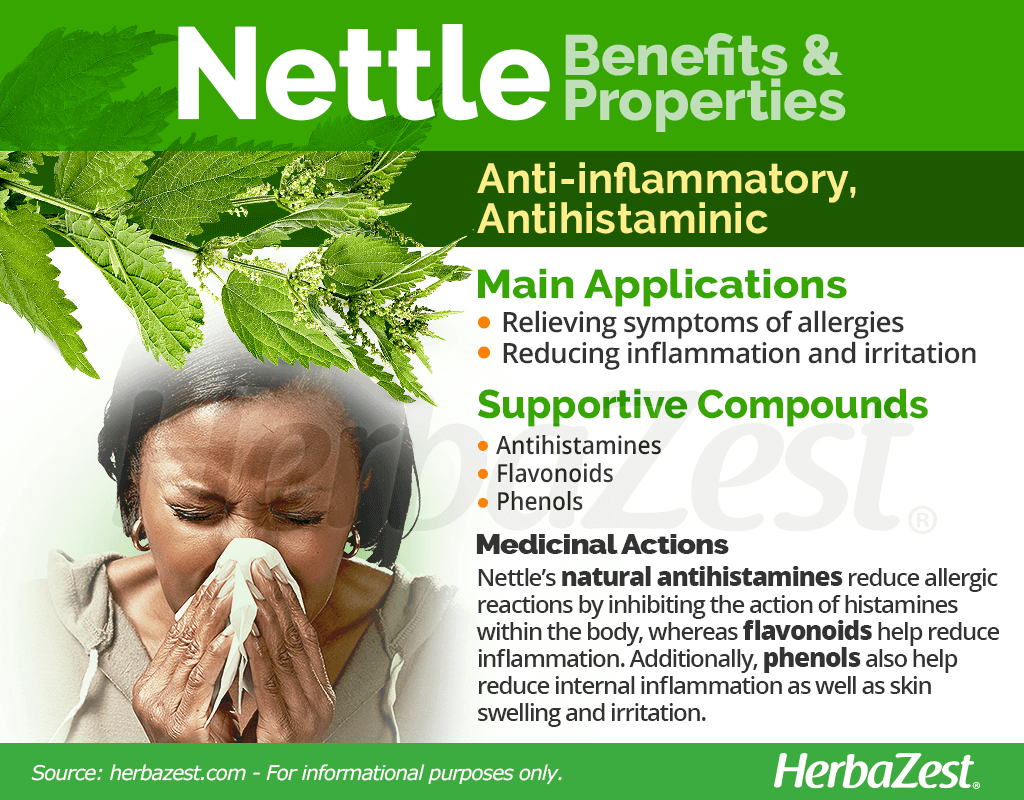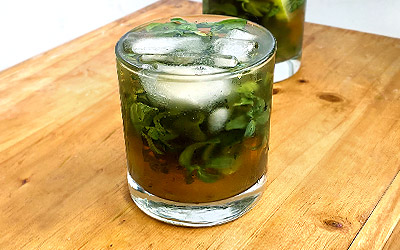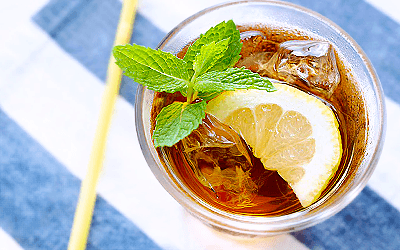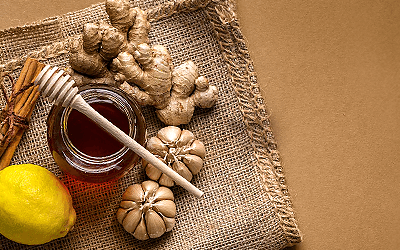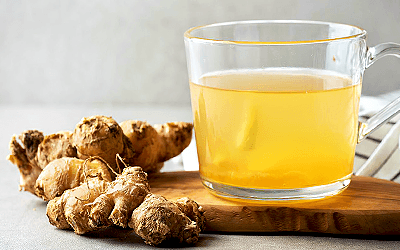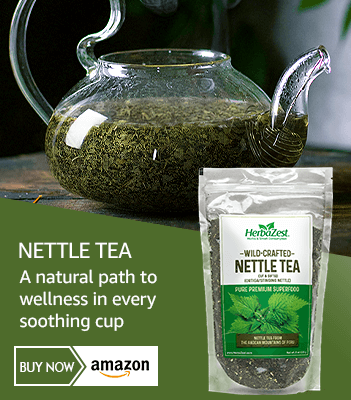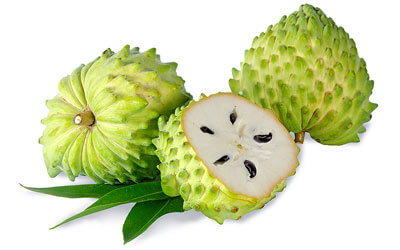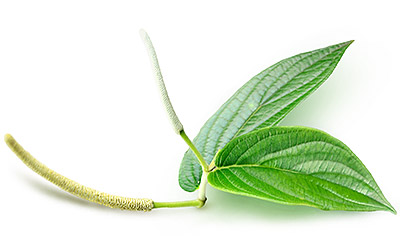Nettle, an herb originally found growing in Europe, Asia, North America, and Africa, has been a popular source for natural teas and hot drinks for centuries. Nettle has been used by humans for various purposes for as long as 5,000 years, and it is first known to have been cultivated as a crop in Europe. Nettle still grows wild throughout the world, and its many health benefits make it a useful herbal remedy.
Nettle Medicinal Properties
- Medicinal action Anti-inflammatory, Antihistaminic
- Key constituents Quercitin, glucoquinone
- Ways to use Capsules, Decoctions, Hot infusions/tisanes, Ointment
- Medicinal rating (3) Reasonably useful plant
- Safety ranking Use with caution
Health Benefits of Nettle
Nettle's properties have been shown effective for:
Reducing inflammation. Studies have shown that nettle can significantly reduce arthritis pain.1 It may also help decrease swelling and skin irritation.
Relieving allergy symptoms. Preliminary results of clinical trials indicate that nettle may help manage allergic rhinitis, but more studies are needed to confirm those effect.2
Additionally, scientific research has revealed other health benefits of nettle, all of which can lead to potential applications in medicine:
Managing diabetes. While there is some evidence that nettle supplementation may help control fasting blood sugar levels in diabetics, more research is needed to better understand these potential benefits, including the role of nettle in metabolic syndrome.3,4
Decreasing benign prostatic hyperplasia (BPH) symptoms. A clinical trial has shown that taking nettle root extract can reduce the severity of BPH symptoms, like urinary frequency and nocturia.5
Alleviating symptoms of menopausal vaginal atrophy. Researchers have found that nettle vaginal cream helps reduce symptoms of vaginal atrophy, such as painful sex and vaginal itching.6
How it Works
Different parts of the nettle plant possess different medicinal uses. The nettle leaves contain natural antihistamines, which enable it to reduce the symptoms caused by allergic reactions by inhibiting histamines.7 Leaves also contain flavonoids, compounds that help reduce inflammation in the body.
Nettle roots contain phenols, which are anti-inflammatory and can reduce swelling both on the skin and internally. However, nettle root also appears to be responsible for improving the urinary symptoms associated with benign prostatic hyperplasia, or enlarged prostate. The mechanism of this action is not yet entirely understood, but the effect has been observed in studies.8
Greater plantain, cat's claw, and sweet birch are herbs that also hold strong anti-inflammatory properties, whereas saw palmetto and pygeum are popularly used for treating the symptoms of benign prostatic hyperplasia (BPH).
Nettle Side Effects
Nettle is considered safe if taken in recommended doses. It may cause some mild side effects, including stomach upset, fluid retention, sweating, and diarrhea, as well as possibly cause a rash if used topically.
Nettle Cautions
Nettle may interact with blood thinners, blood pressure medication, diuretics, diabetes medications, lithium, and non-steroidal anti-inflammatory drugs (NSAIDs), like ibuprofen or aspirin. Nettle is not recommended for those who are diabetic or for those who are pregnant or breastfeeding.
Do not use nettle to treat an enlarged prostate without first visiting a doctor to rule out life-threatening underlying causes of the condition.
Nettle is known for causing a painful sting when touched as chemicals contained in the fine hairs on the leaves and stem are irritating to human skin. Use caution when coming into contact with the plant in the wild or in the garden. Soaking nettles in water or exposing them to heat helps to remove its ability to sting.
Nettle Nutrition
Nettle is full of nutritional benefits, offering surprisingly high amounts of essential minerals and vitamins. While low in carbohydrates, nettle is rich in dietary fiber and provides an adequate amount of vegetable protein.
The most abundant minerals on nettle are calcium and magnesium, followed by manganese. Although the most popular benefit of calcium is building healthy and strong bones, thus preventing osteoporosis and fractures, calcium is also necessary for muscle movement since it plays a role carrying nervous signals from the brain to every part of the body. Additionally, calcium promotes healthy blood vessels as well as helps with the production of hormones and enzymes for proper body function.
Magnesium, on the other hand, is an essential nutrient that helps regulate muscle and nerve function, blood sugar levels, and blood pressure. It also plays an important role in the production of protein, bone, and DNA, whereas manganese is key for producing energy in the body, protecting cells from damage, strengthening bones, and promoting immunity.
This humble herb also provides generous amounts of other nutrients, mainly vitamin K (phylloquinone), which improves blood clotting and has been linked with higher bone mineral density and a reduced risk of fractures.
Good levels of vitamin B2 (rivoflavin) ensure proper growth, development, and function of body cells as well as help transform food into energy.
The unsuspected nutritional value of nettle is rounded by adequate amounts of minerals, such as iron, phosphorus, potassium, and copper, along with vitamins like B6 (pyridoxine).
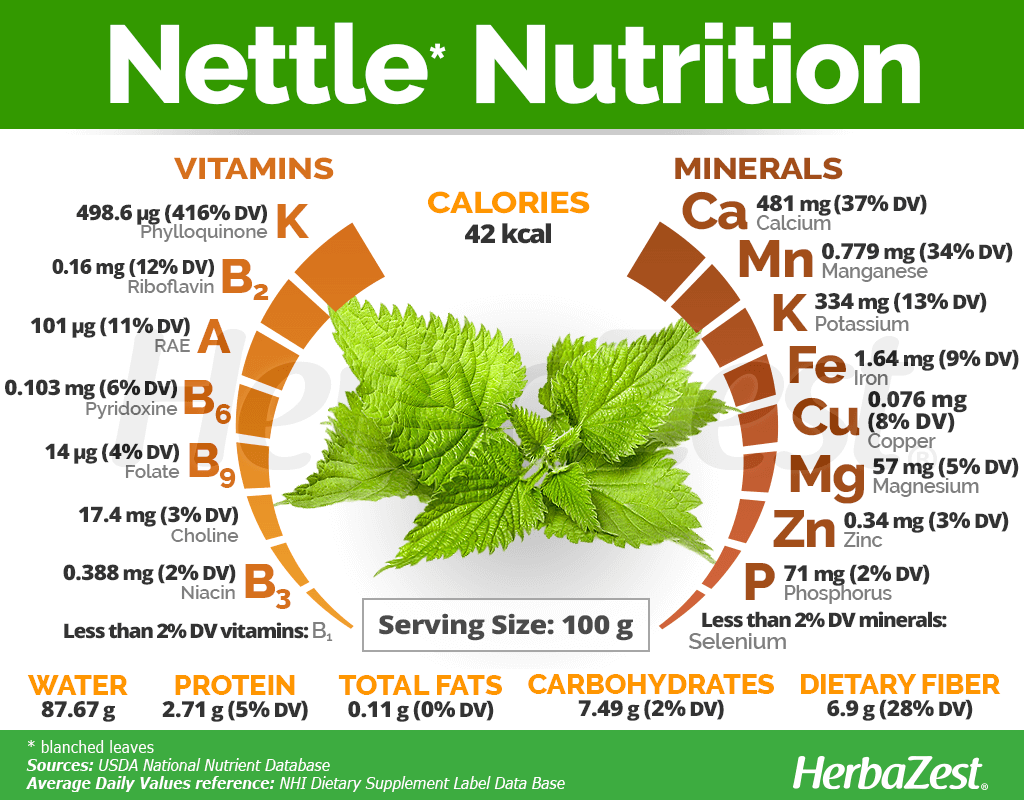
How to Consume Nettle
- Edible parts Leaves
- Taste Mildly bitter
Nettle has a long history of use as a culinary ingredient. It has a flavor said to be similar to spinach or cucumber and can be added to a number of different meals, such as soups and pastas. However, nettle is most commonly used as a remedy.
Natural Forms
- Cooked. Nettle leaves can be blanched and consumed in a similar fashion as spinach. In this form, this unassuming herb provides outstanding amounts of essential nutrients that promote immunity and bone health, preventing diseases, osteoporosis, and fractures.
Infusion. Made from fresh or dried leaves, nettle tea can be consumed daily to relieve allergies and reduce joint inflammation.
Decoction. This preparation is obtained by boiling nettle roots and can be used to reduce inflammation in joints. It can also increase urination, particularly in men with enlarged prostate.
Herbal Remedies & Supplements
Ointment. Nettle ointment is best for relieving skin inflammation and irritation, both from allergic reactions and from other conditions.
Tincture. Nettle tincture can be diluted in water and drank day or applied topically to alleviate skin conditions characterized by inflammation.
Capsules. Nettle capsules can reduce inflammation, especially in joints, and may also promote urination.
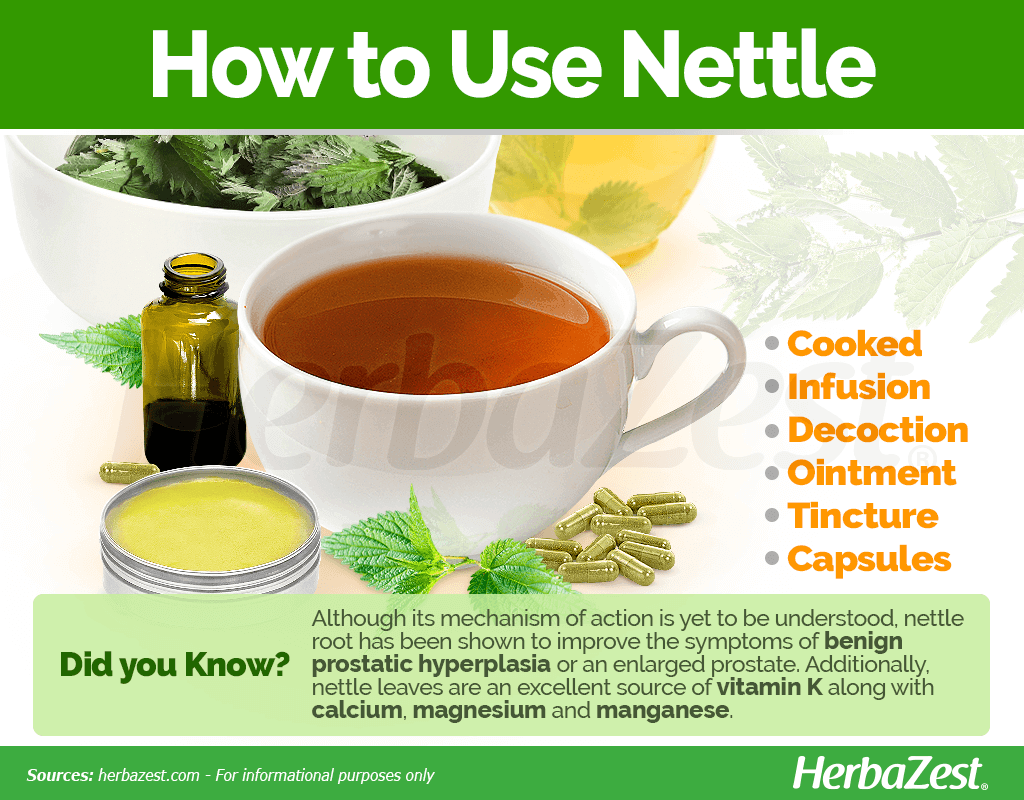
Growing
- Life cycle Annual
- Harvested parts Leaves
- Light requirements Full sun
- Soil Medium (loam)
- Soil pH 5.6 – 6.0 (Moderately acidic), 6.1 – 6.5 (Slightly acidic), 6.6 – 7.3 (Neutral), 7.4 – 7.8 (Slightly alkaline), 7.9 – 8.4 (Moderately alkaline)
- Growing habitat Subtropical regions
- USDA Plant Hardiness Zones 5a, 5b, 6a, 6b, 7a, 7b, 8a, 8b, 9a, 9b
- Pre-germination seed treatment Stratification
- Propagation techniques Cuttings, Divisions
Nettle is considered an invasive weed in many parts of the world, which makes it a simple plant to grow in the garden. It tends to develop well on its own without any intervention if planted in the right conditions. Nettle should not be planted in any place where children or other unsuspecting visitors might be stung.
Growing Guidelines
Both seeds and cuttings are viable methods of propagation for nettle. If using seeds, they should be stratified before planting, and it may be helpful to start the plants in pots indoors for the first few weeks.
Rich, moist soil is the best type of soil for nettle.
Moisture is especially important for nettle, and the soil around the plant should not be allowed to dry out.
Soil with a range of pH levels can support nettle growth; the plant will thrive in both acidic and alkaline soil, with pH levels ranging from 5.5 - 8.5.
Nettle should be planted in full sun to partial shade.
Nitrogen fertilizer will help encourage nettle to grow.
Nettle is not susceptible to many pests or diseases and can even help discourage deer and other animals from eating nearby garden plants.
The plant is considered invasive, so should be monitored to ensure it does not take over a garden.
Additional Information
- Other uses Textiles, Dye
Plant Biology
A perennial herb, nettle generally grows up to five feet (1.5 m) tall. Its leaves are lance-shaped, one to six inches (3 - 15 cm) long, and are covered in tiny, stinging hairs. Nettle grows small green and yellow flowers that bloom in the summer.
Nettle may also be called stinging nettle, burn nettle, burn weed, and burn hazel.
Classification
The nettle, or Urtica dioica, is a member of the Urticaceae family, which contains around 2,600 species. Most of the species in this family have stinging hairs, and members are found on every continent aside from Antarctica.
Varieties and Subspecies of Nettle
The nettle has at least five subspecies: U. dioica subsp. dioica, U. dioica subsp. afghanica, U. dioica subsp. gansuensis, U. dioica subsp. gracilis, and U. dioica subsp. holosericea.
U. dioica subsp. diocia is the most common subspecies in Europe, while U. dioica subspecies gracilis is the most common in North America. Only one subspecies, U. dioica subsp. galeopsifolia, does not have stinging hairs.
Historical Information
The first documented uses of nettle date back to the Bronze Age, in 3,000 - 2,000 BCE, when it was used to create woven textiles, such as burial shrouds, and clothing in Denmark. However, the first records of medicinal applications of nettle appeared in ancient Egypt, and these applications were adopted by both the Greek Mycenaean civilization and the Roman Empire.
By the 16th century, nettle was being used as an antidote for poison in England, and in the 1800s, it began being marketed as a diuretic and tonic.
Economic Data
Nettle is not commonly used outside of herbal remedies, and so it is not considered an economically important plant. It has been produced commercially in the past, but it is now grown mostly by individual gardeners for their own use. It is still grown for and sold in medicinal preparations, but this use does not constitute much economic importance.
Popular Beliefs
Nettles growing in North America were an important part of mythology for many Native American tribes. Often, stinging nettles were personified as bumbling tricksters who provided a humorous note to the myths.
Nettles are also the subject of several different festivals and competitions. One festival in Switzerland hosts a number of restaurant dishes prepared using nettles, while another in Russia takes the nettle as its theme for the nettle's association with love of life, vitality, and strength. Marshwood, a town in England, holds a competition to see who can eat the largest amount of raw stinging nettles - a painful endeavor.
Other Uses
Textiles. The fibers from nettle stems can be used to make textiles, and they have historically been used to make clothing as well as other items such as fishing nets and ropes.
Dye. Nettle has also been used to produce yellow or green dye.
Beer. Nettle leaves have been used to ferment beer.
Despite nettle's sharp sting, it can be a very useful medicinal herb when handled with caution. For those needing alleviation from allergies, inflammation, or urinary problems, nettle is a valuable herbal remedy.
Sources
- University of Washington, Plant Data Sheet: Urtica dioica
- Encyclopedia of Herbal Medicine
- University of Maryland Medical Center, Stinging nettle
Footnotes:
- Journal of the Royal Society of Medicine. (2000). Randomized controlled trial of nettle sting for treatment of base-of-thumb pain. Retrieved August 3, 2023 from https://pubmed.ncbi.nlm.nih.gov/10911825/
- Iranian Journal of Pharmaceutical Research. (2017). Efficacy of Supportive Therapy of Allergic Rhinitis by Stinging Nettle (Urtica dioica) root extract: a Randomized, Double-Blind, Placebo- Controlled, Clinical Trial. Retrieved August 3, 2023, from https://www.ncbi.nlm.nih.gov/pmc/articles/PMC5963652/
- Phytotherapy Research. (2020). The effect of nettle (Urtica dioica) supplementation on the glycemic control of patients with type 2 diabetesmellitus: A systematic review and meta-analysis. Retrieved August 3, 2023, from https://pubmed.ncbi.nlm.nih.gov/31802554/
- Iranian Journal of Basic Medical Sciences. (2022). A review of the effects of Urtica silica (nettle) in metabolic syndrome. Retrieved August 3, 2023 from https://www.ncbi.nlm.nih.gov/pmc/articles/PMC9282742/
- Journal of Herbal Medicine. (2022). The effect of nettle root extract on urinary problems in older men with benign prostatic hyperplasia: A randomized clinical trial. Retrieved August 3, 2023, from https://www.sciencedirect.com/science/article/abs/pii/S2210803322000379
- European Journal of Obstetrics & Gynecology and Reproductive Biology. (2023). The effect of nettle vaginal cream on subjective symptoms of vaginal atrophy in postmenopausal women. Retrieved August 3, 2023 from https://www.sciencedirect.com/science/article/abs/pii/S0301211523001276
- Phytotherapy Research. (2009). Nettle Extract (Urtica dioica) Affects Key Receptors and Enzymes Associated with Allergic Rhinitis. Retrieved March 23, 2020 from https://www.ncbi.nlm.nih.gov/pubmed/19140159
- Federation of European Biochemical Societies. (1999). Plant extracts from stinging nettle (Urtica dioica), an antirheumatic remedy, inhibit the proinflammatory transcription factor NF-κB. Retrieved March 23, 2020 from https://www.ncbi.nlm.nih.gov/pubmed/9923611
